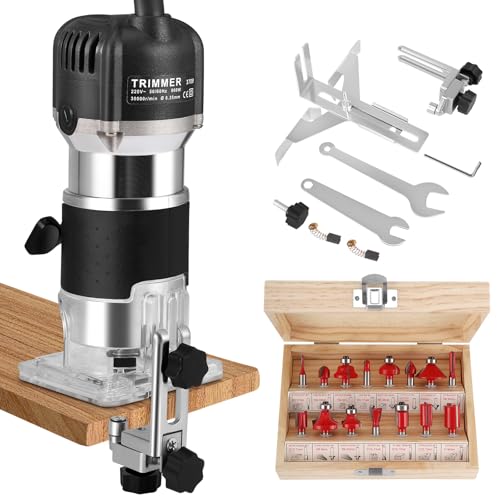It's a big pain to find numbers from the same year, but here's what I found for 1916 for Pittsburgh.
Union carpenter wage (I'm guessing qualified apprentices were probably 2/3rds this rate after they were trained into the union - unless something is changed. You have site time at the union center here if you want to be an apprentice, still).
Anyway, hourly pay for a journeyman carpenter - 62.5 cents an hour in 1916 (up to 71 cents the following year). $27.50 for a work week - 44 hours for the standard work week.
Cost of a brand new stanley bailey #7 from montgomery ward's catalog - $2.70.
Not sure what the tax burden was back then, but would be surprised if it was 10% total as the government at that point preferred indirect taxes (tariffs, duties, etc). It wasn't until WWII that the tax rates really went bonkers.
So, figure a journeyman could buy 10 planes before taxes, and an apprentice could probably have a jointer bought in a day. There is no cabinetmaker journeyman rate published for that time because that was all factory work by then. I have a feeling that it was less than carpenter/bricklayer/plasterer which were all in the same ballpark. There are printers/typesetters, etc, for newspapers, so it's not all just rates for heavy labor.
Wooden jointer in the same catalog from Ohio was $1.10 (but keep in mind, they were junk by then and may have already been benefiting from prison labor). Even though the planes generally don't have all parts good at once, some if the nicest beech billets that I've seen (after cutting the planes apart when something is fatally wrong with them so as to repurpose the beech for handles or wedges) are from later planes that aren't that great. It's the irons that aren't very good. I have no idea why they're not - they're crumbly and chippy without being hard, which is puzzling. I've had no luck rehardening them to be something good, so it's probably a steel quality issue.
Union carpenter wage (I'm guessing qualified apprentices were probably 2/3rds this rate after they were trained into the union - unless something is changed. You have site time at the union center here if you want to be an apprentice, still).
Anyway, hourly pay for a journeyman carpenter - 62.5 cents an hour in 1916 (up to 71 cents the following year). $27.50 for a work week - 44 hours for the standard work week.
Cost of a brand new stanley bailey #7 from montgomery ward's catalog - $2.70.
Not sure what the tax burden was back then, but would be surprised if it was 10% total as the government at that point preferred indirect taxes (tariffs, duties, etc). It wasn't until WWII that the tax rates really went bonkers.
So, figure a journeyman could buy 10 planes before taxes, and an apprentice could probably have a jointer bought in a day. There is no cabinetmaker journeyman rate published for that time because that was all factory work by then. I have a feeling that it was less than carpenter/bricklayer/plasterer which were all in the same ballpark. There are printers/typesetters, etc, for newspapers, so it's not all just rates for heavy labor.
Wooden jointer in the same catalog from Ohio was $1.10 (but keep in mind, they were junk by then and may have already been benefiting from prison labor). Even though the planes generally don't have all parts good at once, some if the nicest beech billets that I've seen (after cutting the planes apart when something is fatally wrong with them so as to repurpose the beech for handles or wedges) are from later planes that aren't that great. It's the irons that aren't very good. I have no idea why they're not - they're crumbly and chippy without being hard, which is puzzling. I've had no luck rehardening them to be something good, so it's probably a steel quality issue.

































